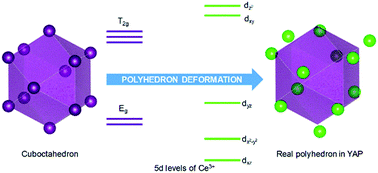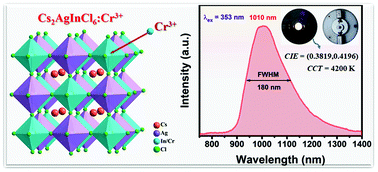Physical Chemistry Chemical Physics, January 2019, 21(5)

The crystal-field levels of Ce3+ in a series of lanthanide aluminum perovskites have been investigated with reference to polyhedron deformation. For each compound, the corresponding ideal cuboctahedron is derived through a least-square procedure. The virtual energy levels of Ce3+ in these ideal polyhedrons are then obtained considering both crystal-field splitting and spin–orbit coupling. From comparison to real levels, we have a clear understanding of how polyhedron deformation affects the energy levels of Ce3+ in the perovskites.


